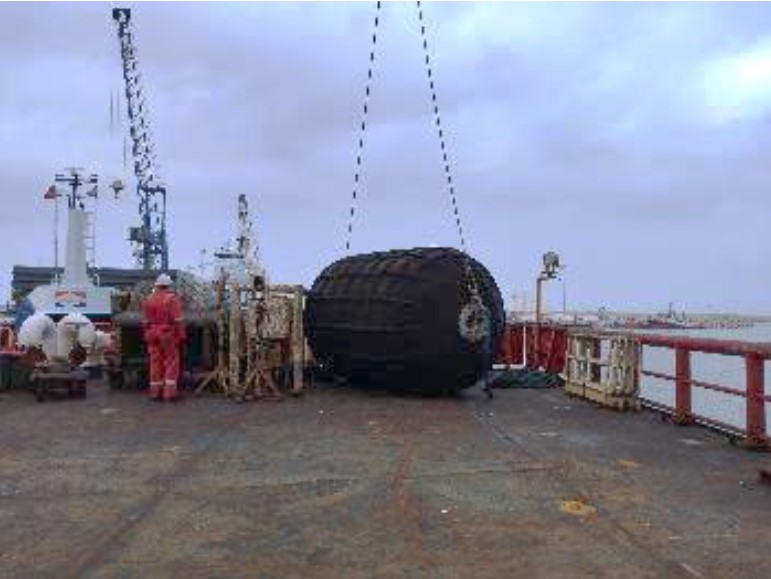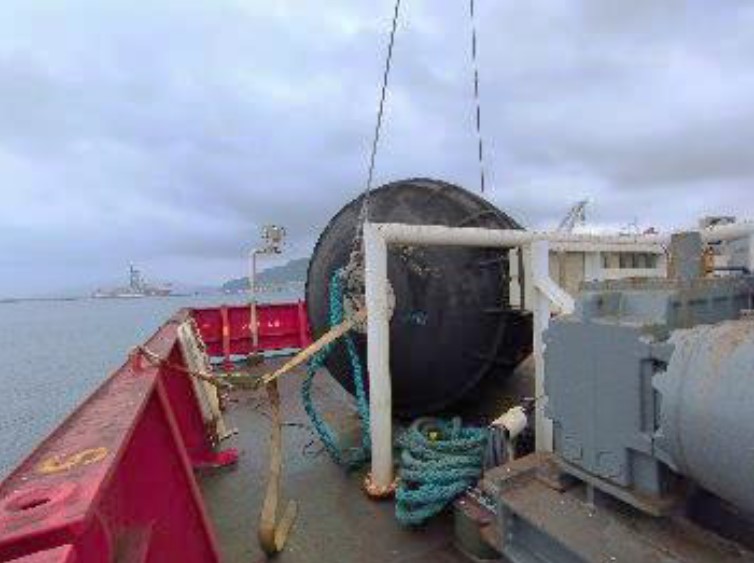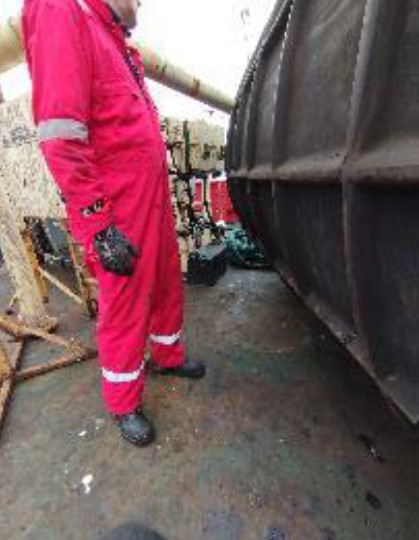High potential incident: person struck by Yokohama fender
What happened
During the lifting of a Yokohama fender onboard a vessel in harbour, a person placed himself in the line of fire between the fender and bumper bars protecting an electrical services panel. He was struck and injured as the fender moved. The injured person had to move into the line of fire between the fender and the bumper bars in order to release cargo strap sea fastenings from the fender which were attached to the vessel bulwark. At this point the Yokohama fender pivoted and he became trapped between the fender and the bumper bar frame. Operations were immediately stopped and the vessel medic was called. The injured person was taken to a shore-side hospital for further examination. After medical examination he was released back to the vessel the same day.


What went wrong
- In this particular instance, this Yokohama fender was not accessed from the rear, as was usual, but from a position that put the crewman in the line of fire;
- Neither the vessel task plan nor the Task Risk Assessment (TRA) for mooring operations included the lifting and installation of Yokoyama Fenders, nor did they take into account the line of fire risk;
- Human factors and risk perception – the injured person did not wait for the Yokoyama fender to stabilise before going into the line of fire. The incident occurred very fast; there was no time for the other members of the team to react and intervene.

Actions taken
- Reviewed how Yokohama fenders are stored on board vessels, with reference to reducing and controlling Line of Fire risks in the task of securing and relocating fenders;
- Reviewed vessel task plan and risk assessments for mooring operations, to ensure inclusion of:
- lifting and installation of Yokohama fenders where appropriate;
- Line of fire, personnel positioning, entrapment risks and escape routes.
- Heightened focus on controls, barriers, and risk management where Line of Fire risks have been identified;
- Considered regular “After Task” reviews as a key part of task planning to focus on learning, safety, and human/performance improvement;
- Ensured that the obligation and expectation to exercise the Stop Work Authority is clearly communicated and understood by all parties. Always ensure an area is safe before entering after an All Stop has been called.
Members may wish to refer to:
- Near miss: load lifted without notice putting crew in the line of fire
- Non-fatal man overboard incident [“Whilst retrieving the forward mooring rope from the sea (which was stuck between the forward Yokohama fender and the barge at the time)…”]
Safety Event
Published: 16 February 2023
Download: IMCA SF 05/23
IMCA Safety Flashes
Submit a Report
IMCA Safety Flashes summarise key safety matters and incidents, allowing lessons to be more easily learnt for the benefit of all. The effectiveness of the IMCA Safety Flash system depends on Members sharing information and so avoiding repeat incidents. Please consider adding [email protected] to your internal distribution list for safety alerts or manually submitting information on incidents you consider may be relevant. All information is anonymised or sanitised, as appropriate.
IMCA’s store terms and conditions (https://www.imca-int.com/legal-notices/terms/) apply to all downloads from IMCA’s website, including this document.
IMCA makes every effort to ensure the accuracy and reliability of the data contained in the documents it publishes, but IMCA shall not be liable for any guidance and/or recommendation and/or statement herein contained. The information contained in this document does not fulfil or replace any individual’s or Member's legal, regulatory or other duties or obligations in respect of their operations. Individuals and Members remain solely responsible for the safe, lawful and proper conduct of their operations.
